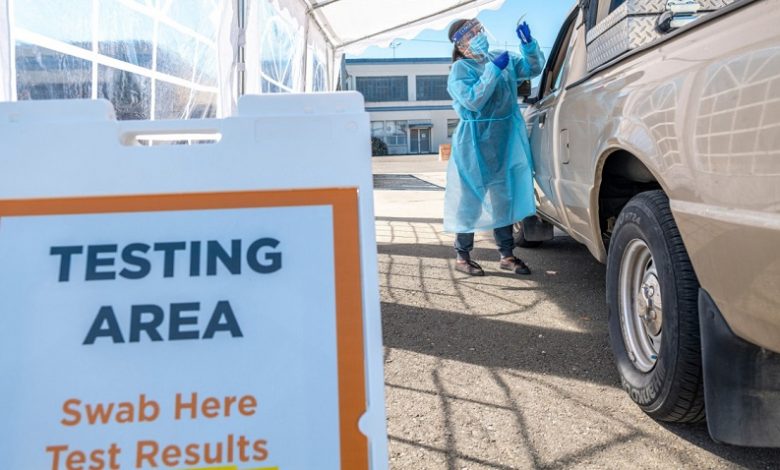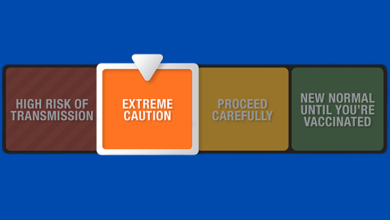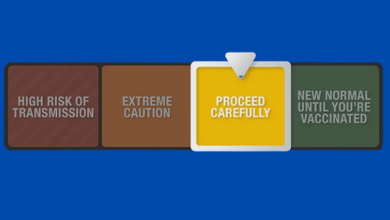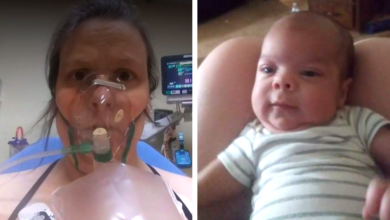Doctors Warn COVID-19 Tests Aren’t Foolproof for Thanksgiving Gatherings

We’re just two days out from Thanksgiving and some families are relying on testing to stay safe and host get togethers, despite CDC recommendations to avoid large gatherings for the holiday.
However, doctors warn that the results aren’t foolproof.
NBC 5 spoke with local expert Dr. Nick Karr for some insight on how tests work and why a negative test result doesn’t give you a free pass.
Dr. Karr has served as an ER doctor at several DFW hospitals and founded Sinai Urgent Care Clinic with locations around the metroplex. At the start of the pandemic, he launched SafeWork, one of the first non-governmental test sites in Dallas.
Currently, he said his clinics are seeing an increase in testing as people prepare for the Thanksgiving holiday. All four locations are conducting over 400 tests per day as they try to keep up with demand.
“It tells you that there’s a lot of people looking for testing. I think some of that is driven by people starting to have symptoms and I think that there’s better awareness now about what symptoms can look like,” he said.
Timing is everything
Dr. Karr is stressing the importance of understanding how the tests provide a snapshot in time. He said you could test negative one day and be positive the next day because it can take anywhere between two to 14 days for symptoms to appear and for you to become infectious.
“What we’ve seen in these studies is usually it’s going to take at least three to four days before you can even begin to show any kind of detectable virus in a sample,” he explained. “If you’ve been exposed say yesterday – and it’s going to be a large enough dose that’s going to potentially cause infection – it doesn’t do any good to get tested today. Really we want to wait four, preferably five days before we even begin testing.”
Dr. Karr said tests – especially the less accurate rapid tests – can give a false sense of security if people are using it to justify being around at-risk family members without a mask or other safety measures.
“That’s definitely one of the things that’s made this virus in particular so difficult to diagnose because we have this issue of this lag time,” he said.
For example, if you get tested five days after being exposed, you may test negative but three days later at that family gathering, you could be pre-symptomatic and contagious. Then two days after that, the symptoms begin.
There’s also the risk of being exposed between your negative test and the time you meet with family.
What’s the difference between tests?
The type of test you take can also make difference, depending on your need.
“One of the things I think is important for patients to understand is that with any test, it’s always a balance between speed and accuracy,” Dr. Karr said.
You have two options — the polymerase chain reaction (PCR) test and the rapid antigen test.
The rapid antigen tests give you results in 15 to 30 minutes but it has a higher rate of false negatives and is more effective if you’re already displaying symptoms.
“The rapid tests are looking for sections of protein from the virus, once the virus creates that protein,” he explained. “Faster tests are going to be less accurate. And that’s OK as long as we understand those limitations.”
PCR test results take longer. Results usually arrive in two or more days but it’s more accurate, even if you have no symptoms.
“Because those are run-in highly complex labs, the labs are constantly re-validating and seeing how accurate is this testing,” Dr. Karr said. “The antigen testing though, it’s being run in the most basic level of lab certification. It’s not revalidating to make sure that the test is reporting the accuracy in the same way.”
Experts stress it’s important for patients to know that testing is a balance between speed and accuracy. Faster tests are going to be less accurate.
“If you test positive on an antigen test and you had symptoms, it’s probably a real positive and we should treat it as such. If it’s negative, I can’t rule you out,” Dr. Karr explained. “Let’s say you have a broken bone and you get an X-ray. A positive X-ray showing fracture can say that rules me in but it doesn’t rule me out if it’s negative. A CT scan might be more accurate because it’s more sensitive.”
You can find lists of testing sites on the website for your local health authority, or by going to the state coronavirus testing site.
Keep track of symptoms
Another challenge for doctors is symptoms.
Dr. Karr said he’s seeing a wider range of symptoms and severity of those symptoms than he ever has in his career. It’s making it difficult for patients to know whether or not they’re infected.
Click here for a full list of symptoms for COVID-19, as reported by the CDC.
“It’s all over the map. I’ve seen something as mild as allergy symptoms to bad stomach upsets and even someone who had hives and seemed like they were having an allergic reaction,” Dr. Karr. “I think those are the types of things more than anything that patients and the public should be aware of, is that some of the symptoms they may have dismissed as a mild cold or mild allergy symptoms could in fact be COVID.”
So bottom line, doctors say testing by itself is not going to be enough. They say you should still wear a mask, keep an eye on your day to day health and symptoms, and avoid large gatherings.
People with high risk need to be especially careful as they navigate this Thanksgiving holiday.
“No one solution is going to work alone to prevent the spread of the virus. Even the best kind of testing isn’t necessarily going to prevent it,” Dr. Karr said. “No one should feel like they are are safe from potentially having or spreading it. That doesn’t mean people need to walk around freaked out about it but I think it’s just a matter having a high mix of suspicion or recognition that you could be carrying the virus and that even a negative test isn’t a guarantee against that.”
Finally, as COVID fatigue becomes more apparent heading into the new year, experts say there is still so much to look forward to.
“Know that we’re going to get through this, as much as the virus has had a tremendous human toll. There’s a lot of things that we know now that we didn’t know even a few months ago,” Dr. Karr said. “It looks like there’s a lot of positive news coming out in the realm of vaccines so I’m just optimistic long-term. We’ve gone this far, I know we can make it the rest of the way.”





